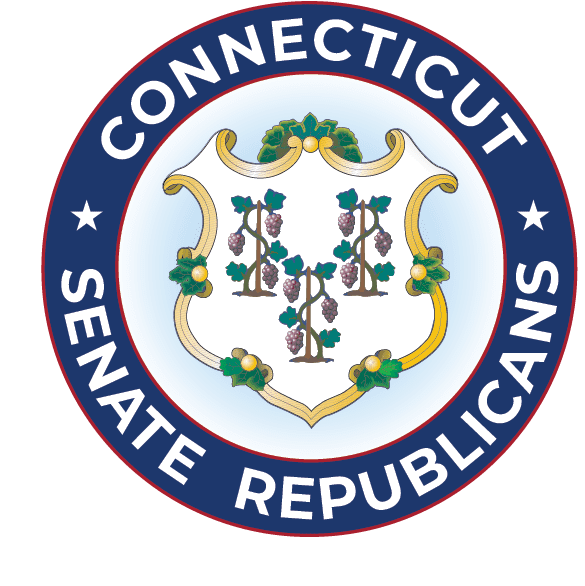Sen. Kelly Questions State’s Preparedness for Potential Nursing Home COVID-19 Resurgence
September 8, 2020State Senator Kevin Kelly (R-Stratford) today wrote to Governor Ned Lamont to raise multiple questions about what the state is doing to prepare for any potential resurgence of COVID-19 in Connecticut long term care facilities.
Sen. Kelly emphasized the findings of Mathematica’s initial report on the state’s nursing home response and testimony shared at a General Assembly listening session last week that raised questions about the state’s preparedness to address any future second wave of COVID-19 in nursing home settings.
“Seniors in our nursing homes deserve answers and Connecticut must do more to restore confidence and trust in the state’s ability to protect the most vulnerable,” Kelly wrote. “While Connecticut is in a much better place today than most other states, our state failed nursing home residents in the early days of the pandemic. Approximately 74% of deaths due to COVID-19 in Connecticut occurred among nursing home residents, significantly higher than the national average of 40%.
“Nursing home residents continue to be isolated from their families, resulting in further decline and physical and mental health issues. Nursing homes have testified that Connecticut had a serious PPE issue and will have a serious funding issue if resurgence occurs. Residents experienced something deeply traumatic this spring, and we need to make sure they will never experience that pain, terror and suffering again.”
Sen. Kelly questioned the Lamont administration’s preparation in six major areas:
1. Planning for a potential resurgence in nursing homes
2. Providing access to personal protective equipment
3. Improving and maintaining testing
4. Visitation policies
5. Nursing home funding
6. Community based services
LETTER BELOW
September 8, 2020
Governor Lamont:
Far too many people have died in Connecticut nursing homes, and I have grave concerns that Connecticut is not prepared to prevent more deaths should a second wave of the COVID-19 pandemic take root in our long term care facilities again.
According to the Mathematica interim report on the state’s response to the Coronavirus pandemic in nursing homes, Connecticut still lacks a plan to prepare for and combat a second wave of infections. In addition to the alarming initial findings of Mathematica, a listening session of three legislative committees that took place yesterday raised more questions about the state’s preparedness to mitigate future outbreaks among our most vulnerable elderly residents.
Seniors in our nursing homes deserve answers and Connecticut must do more to restore confidence and trust in the state’s ability to protect the most vulnerable. While Connecticut is in a much better place today than most other states, our state failed nursing home residents in the early days of the pandemic. Approximately 74% of deaths due to COVID-19 in Connecticut occurred among nursing home residents, significantly higher than the national average of 40%. Nursing home residents continue to be isolated from their families, resulting in further decline and physical and mental health issues. Nursing homes have testified that Connecticut had a serious PPE issue and will have a serious funding issue if resurgence occurs. Residents experienced something deeply traumatic this spring, and we need to make sure they will never experience that pain, terror and suffering again. Therefore, I would ask that your administration please provide answers to the below questions:
- Planning for a potential resurgence in nursing homes:
a. Why has the Department of Public Health not yet come up with a comprehensive plan to address a potential resurgence in our nursing homes?
b. Is there a plan for keeping COVID-19 positive patients together should a resurgence occur? What are the details of that plan? Do you have contracts in place to secure those locations and ensure they are adequately funded?
c. What CARES Act funds have been set aside for nursing home response efforts including but not limited to technology to keep families connected, staffing, testing, PPE, infection control and facility upgrades and improvements?
d. Please share anything the State Department of Public Health has done to prepare for and address a second wave of infections in Connecticut’s long term care facilities. - Personal Protective Equipment:
a. Have the state’s PPE procurement policies changed over time? What was the state’s initial policy and has that policy changed at all throughout the pandemic?
b. What will the state do to procure needed personal protective equipment for nursing home facilities over the long term?
c. Is the state planning to leave the procurement responsibility entirely with nursing homes, or will the state provide PPE? If the state will provide PPE, for how long and what amount of equipment?
d. Who will be responsible for paying for PPE?
e. What is being done to ensure the quality of PPE provided by the state meets the needs of nursing home facilities? - Testing:
a. Mathematica raised concerns about your orders allowing nursing home facilities to stop testing after a number of days with no positive tests. Is that policy being changed? If so, when and how is it being implemented and enforced?
b. What is being done to prepare for any needed expansion of testing for nursing home residents and staff to prevent future outbreaks?
c. Does the state have a plan to provide access to or pay for testing for nursing home residents and staff over the long term beyond October?
d. If nursing homes are expected to pay for testing beyond October, what is being done to ensure they have access to tests with quick turnaround times?
e. What is being done to ensure testing occurs in a timely manner and holding those hired to complete the testing accountable when they fail to meet required turnaround times? - Visitation policies:
a. What is the state’s long term plan to keep families connected with loved ones?
b. What is the plan for winter months when outdoor visits become difficult?
c. What is the plan for keeping people safely connected should a resurgence occur?
d. What is the plan to reduce social isolation?
e. What is the plan to encourage patient centered care? - Nursing Home funding:
a. Is the administration considering increasing Medicaid reimbursement rates not tied to salary to nursing homes?
b. Is the administration considering increasing the Personal Needs Allowance for nursing home residents?
c. What federal CARES Act funding has been and will be spent to improve life for residents and workers at nursing homes? Is there a plan to increase this funding if a resurgence occurs?
d. What state funding has been and will be spent to improve life for residents and workers at nursing homes? Is there a plan to increase this funding if a resurgence occurs? - Community Based Services:
a. Are you considering reopening category 1 of the Connecticut Home Care Program for Elders to provide individuals more opportunities to remain in their home as an alternative to nursing homes?
b. Would you consider presumptive Medicaid eligibility as a means to keep categorically needy individuals in their homes who don’t have the resources to privately finance through the lengthy DSS application process? This is an institutional care diversion initiative.
c. Would you increase Medicaid reimbursement rates for home care so that more providers are willing to accept Medicaid clients for home care?
Thank you for your time and attention.
Sincerely,
Kevin C. Kelly

